When it comes to the most popular expat destinations in Spain, the Spanish Costas are the clear winners. They attract way more expats and tourists than any other part of Spain.
Each Spanish Costa is a region in itself while playing a significant role in the surrounding culture and province. How do you pick the one that’s right for you?
This guide will help you sort them out and discover which Spanish Costa best fits your expat lifestyle.
Secure Peace of Mind with Best-Value International Health Coverage
International Citizens Insurance provide free, no-obligation quotes from the leading international health insurance providers with plans tailored to meet your needs. Trusted by thousands of expats worldwide.
The Spanish Costas list
With nearly 5000 miles / 8000 km of coastline, Spain is essentially one Costa. Scattered throughout all of that sand are over 2500 beaches. Nearly 600 of those are Blue Flag beaches: the most of any country in the world.
Beginning in the northeast corner at Galicia, Spain’s Costas wrap around the country to the southern town of Cadiz, past Gibraltar.
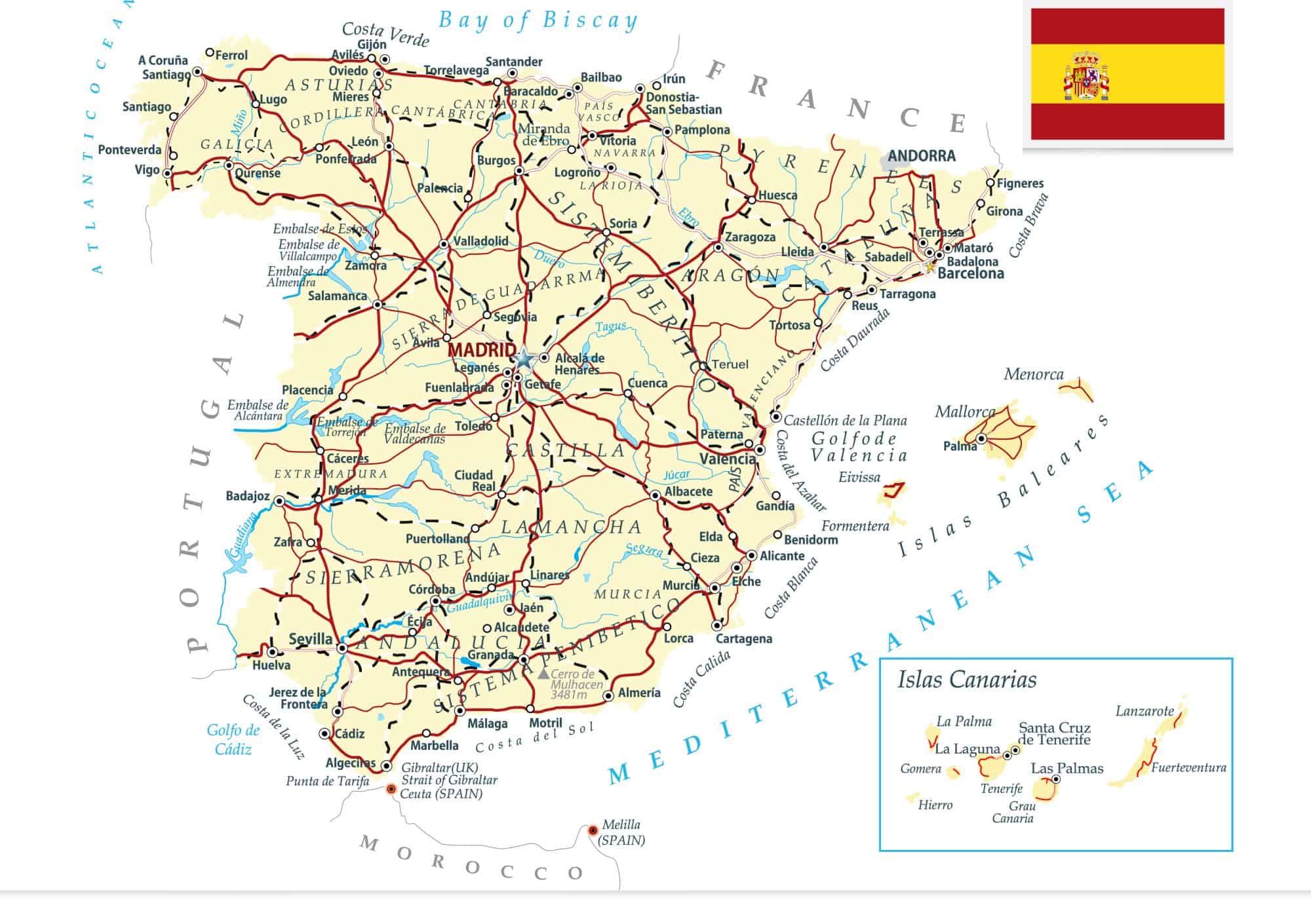
While all of them would appeal to any beach lover, there is more to Spain’s Costas than sand and parasols. Each Costa is distinctive, with unique climates, geography, and cultures.
The Spanish Costas list
- Costa Verde / Costa de Galicia / Costa Vasca
- Costa Brava
- Costa Dorada
- Costa del Azahar
- Costa de Valencia
- Costa Blanca
- Costa Cálida
- Costa de Almería
- Costa Tropical
- Costa del Sol
- Costa de la Luz
Spain’s northern coastline – the Costa Verde
The Costa Verde, or Green Coast, is the totality of all of Spain’s northern Costas, creating Spain’s longest and least known coastline.
The Costa Verde is ideal for nature lovers. It is the most scenic, outdoorsy, and best described as modern urban landscape peppered amongst the mountains and beaches.
Temperate weather is the norm, but it’s possible to experience nearly all four seasons in a single day. The Costa Verde is very rainy all year long.
The Costa de Galicia – the Coast of Galicia
Beginning in Portugal and running nearly 1000 miles / 1500 KM, the Costa de Galicia is where the Atlantic Ocean is Spain’s front yard. It’s a popular summer holiday destination for Spaniards.

Galicia is an autonomous region with its own culture, cuisine, and dialect.
The capital city, Santiago de Compostela, is roughly 40 minutes inland and nestled amongst the mountains. It’s small but vibrant and full of character and tradition.
The city offers much to do, especially if you love eating, shopping, and sightseeing.
The Costa de Galicia’s legendary beaches and the smaller Costa da Morte, or Coast of Death, can be found in Coruna.
The Coast of Morte is home to numerous shipwrecks making for some very adventurous diving.
The coastal town of Pontevedra is considered one of Europe’s family friendliest places to live and offers one of Spain’s highest quality of life.
Vigo is the largest and most modern city in the area. It’s an industrial hub less focused on tourism offering its residents all amenities of a vibrant seafront city.
The Costa Vasca – the Basque Coast
On the Bay of Biscay to the French Pyrenees is the Costa Vasca.
This is Spain's Basque region, home to one of Europe’s oldest, strongest, and most unique cultures.
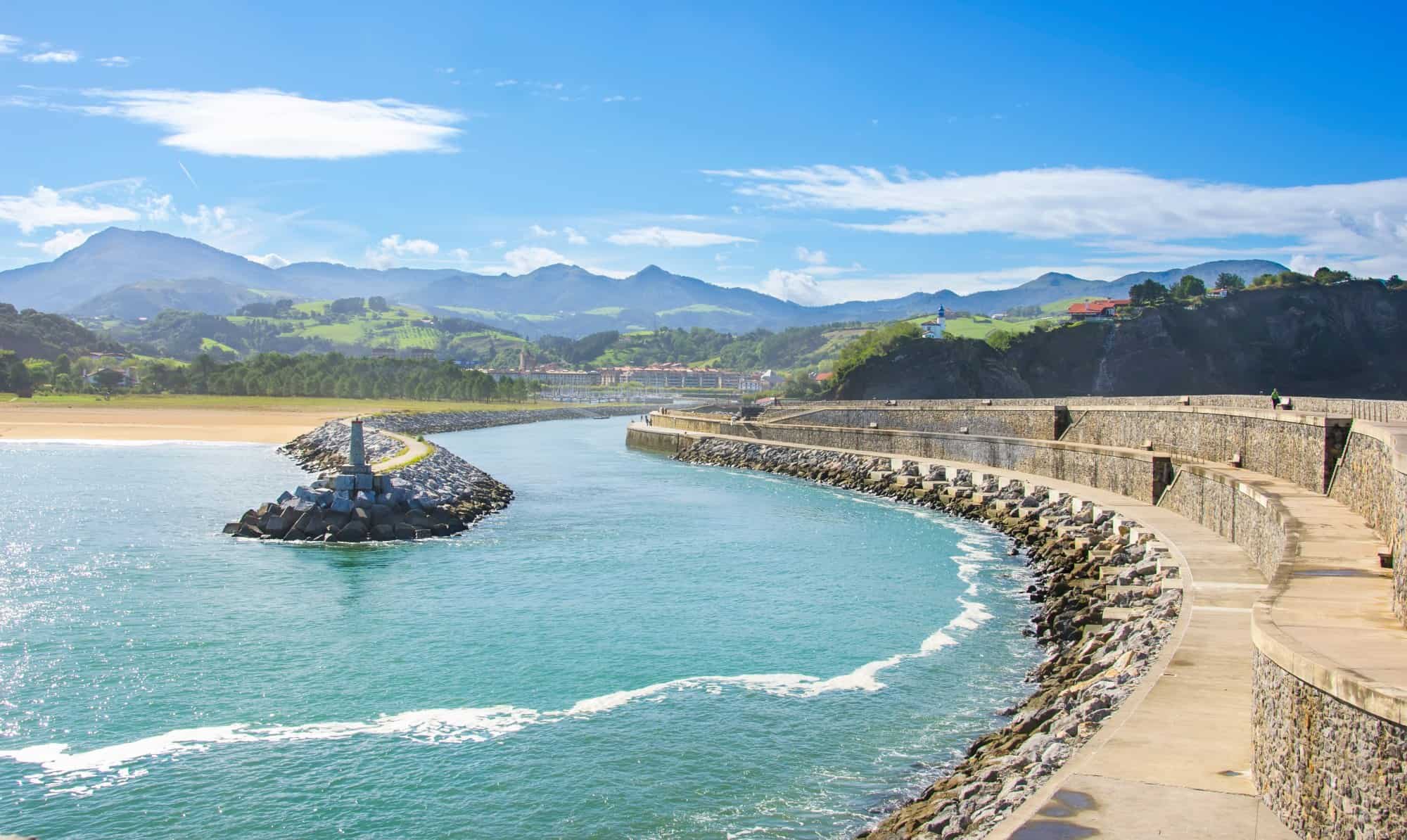
Basque cuisine is singular in Spain, and eating is the regional past-time. Per capita, the Basque region is near the top of the list for most Michelin-starred restaurants.
Bilbao is the urban hub of the region and the largest northern city. It is considered the pearl of Costa Vasca and a Basque treasure. It’s a city you can re-discover every day, one of the best places to live in Spain.
For the best beaches, head to San Sebastián, one of Spain’s most beautiful cities. San Sebastián, once awarded as having the world’s best food, also has some of the world’s best beaches.
There are beaches for families, surfers, sunbathers, water sports, and even royalty. La Concha has been the choice of numerous European queens.
Santander is an economic hub of the north and is perfect for professionals. It is Spain’s northern tourism portal offering ferry service to and from the UK and Ireland.
If you are after more nature than urban, but in a quite modern way, Asturias is the place to be.
Asturias, and its 90 beaches along its Costa de Cantabria, is Spain’s natural paradise. It’s wine country and one of Spain’s best-kept secrets. Asturias is a modern landscape saturated with both tradition and contemporary industry.
Spain’s eastern coastline
Spain’s eastern edge offers the most Costas and the most variety.
These Costas favor sunshine instead of rain. The climate is seasonal, with hot, dry summers and moderately cold winters.
The farther down the edge you go, the hotter the summers and the milder and shorter the winters.
The Costa Brava – the Wild Coast
From the opposite side of the Pyrenees and down to Barcelona is the Catalonian Costa Brava. This is where Spain becomes the Mediterranean.

Still a mix of nature and beaches, the region is defined by cliffs, gardens, coves, and protected nature reserves.
Cities in the Costa Brava are small and certain areas could be considered overly developed for the tourism industry.
The largest city, Girona, is focused on fun. Whether you prefer skiing, swimming, golfing, or hiking, Girona is all about active tourism.
Though a modern city, Girona had outstanding medieval architecture, which is why it was a filming location for Game of Thrones.
Blanes is the Gateway to the Costa Brava and the center of tourism. Offering incredible beaches and one of Europe’s largest fireworks displays, the Concurs Internacional De Focs D’Artifici De La Costa Brava.
The Costa Dorada – the Golden Coast
Leaving Barcelona, you will come to the Costa Dorada’s sands shining like gold in the summer sun.
This is where Spain’s Costas transform into a traditional beach destination, though there is still a lot of culture, history, and tradition inland.
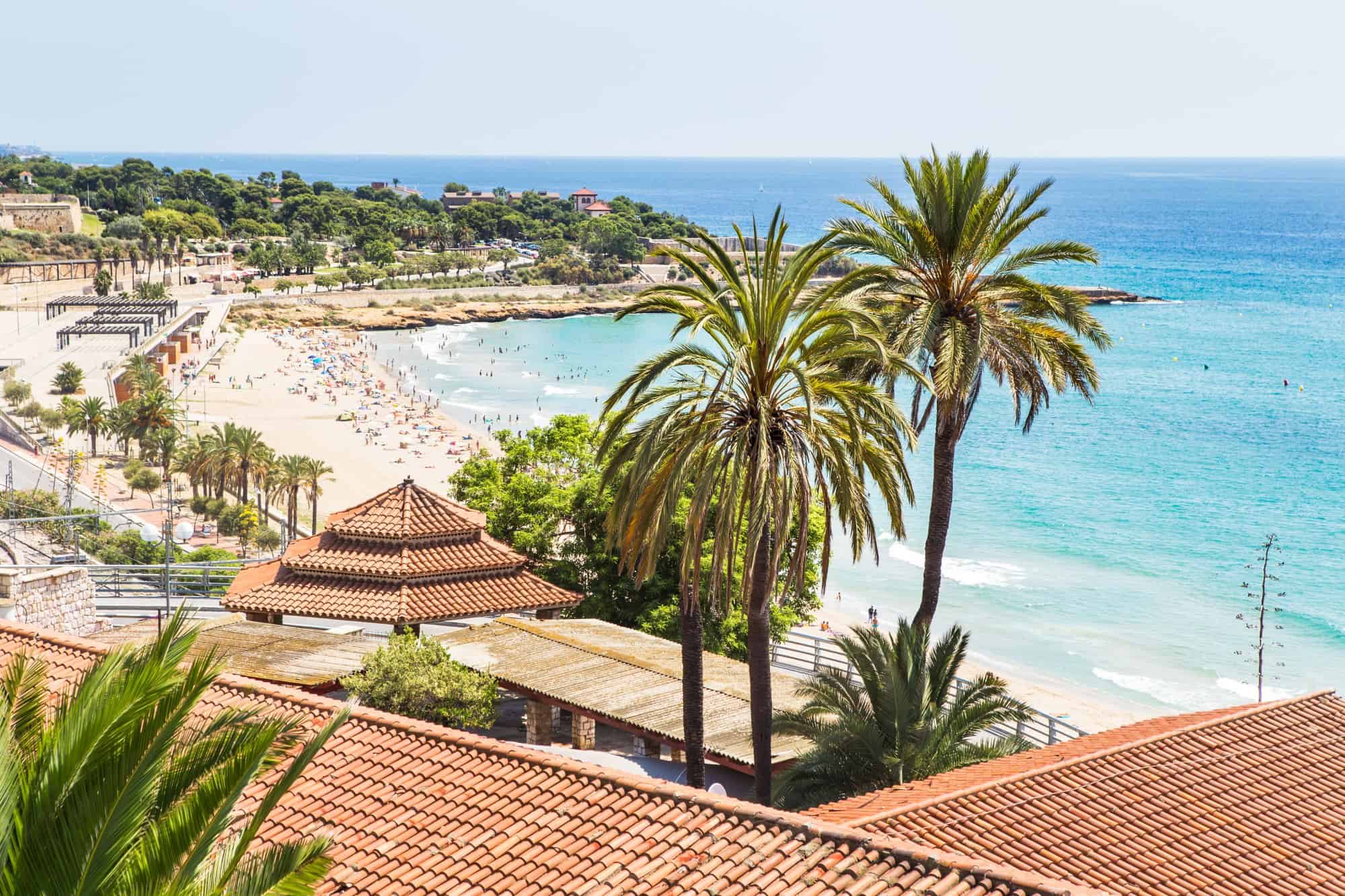
The Costa Dorada is the ideal family destination.
It has 20 small towns and villages scattered amongst its vineyards and olive groves and plenty of beaches offering clean sand and transparent shallow waters.
Sitges is a beach, nudist, and LGBTQ destination, which basically means the summer is one long crazy party.
Tarragona is a Mediterranean port town and is considered living history. It is also a favorite of Western Europeans.
An artifact of the Roman era, Tarragona is packed with World Heritage sites. It does have a fun side, too, with Port Aventura World being Spain’s most visited amusement park.
From the beaches to the food to the nightlife, the Costa Dorada offers a lot to expats.
The Costa del Azahar - the Orange Blossom Coast
Heading down to Valencia is the Costa del Azahar.
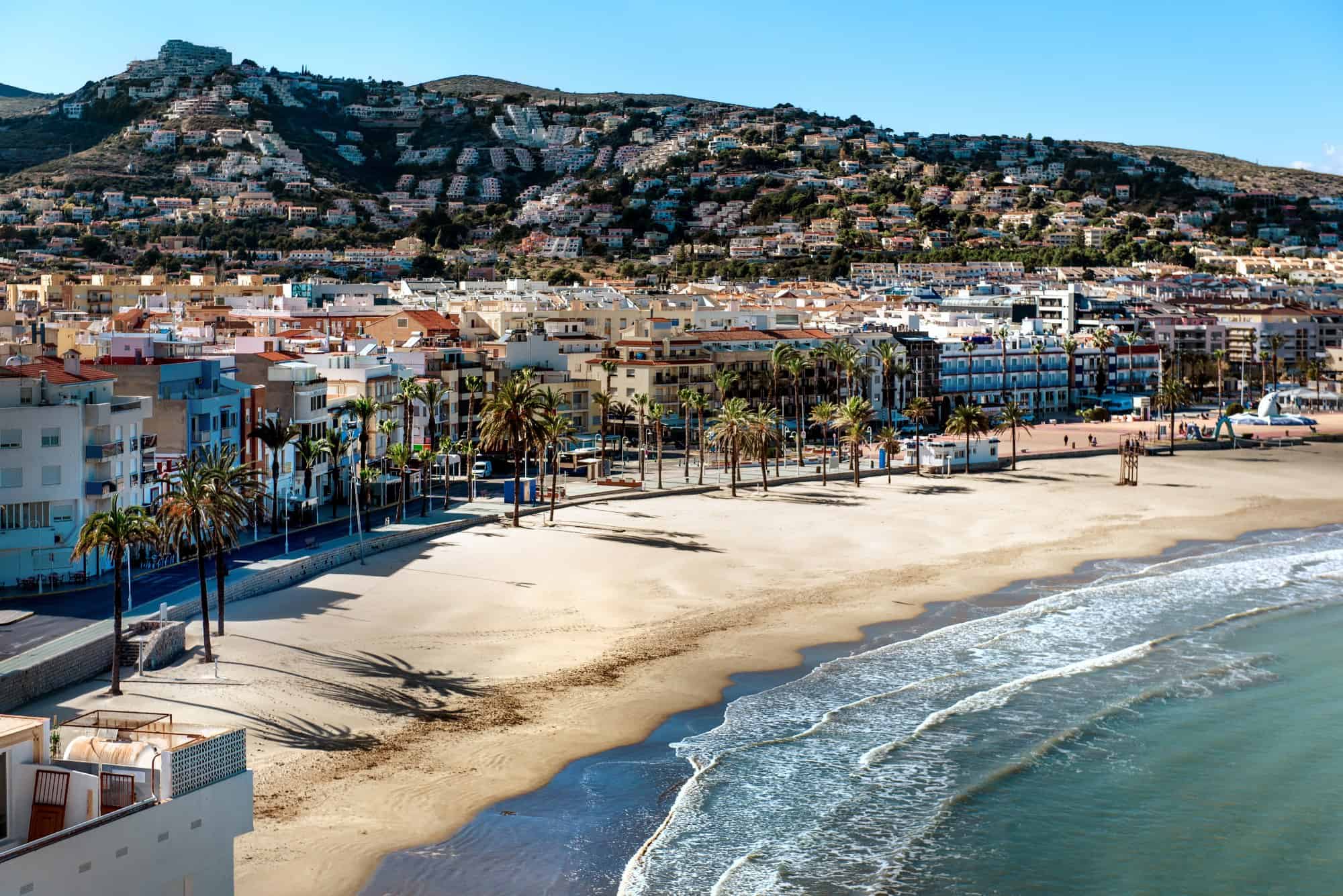
This is Spain’s unsung hero of beach holiday destinations, where the sun begins shining 300 days a year, and you get some of the best weather in Spain.
The whole area is popular with English-speaking expats as it's an affordable choice for retirement.
As the name suggests, oranges are at the heart of the region’s cultivation. But, the cuisine, many claim, is Spain’s best version of seafood.
Castellón de la Plana is a medieval city rich in history, beaches, and nature. It's a very welcoming and heartwarming place, a city where everyone knows everyone.
The Costa de Valencia – the Coast of Valencia
The epitome of the Mediterranean and the proud owner of the most Blue Flag beaches in Spain, the Costa de Valencia is arguably the most picturesque on Spain’s eastern edge.
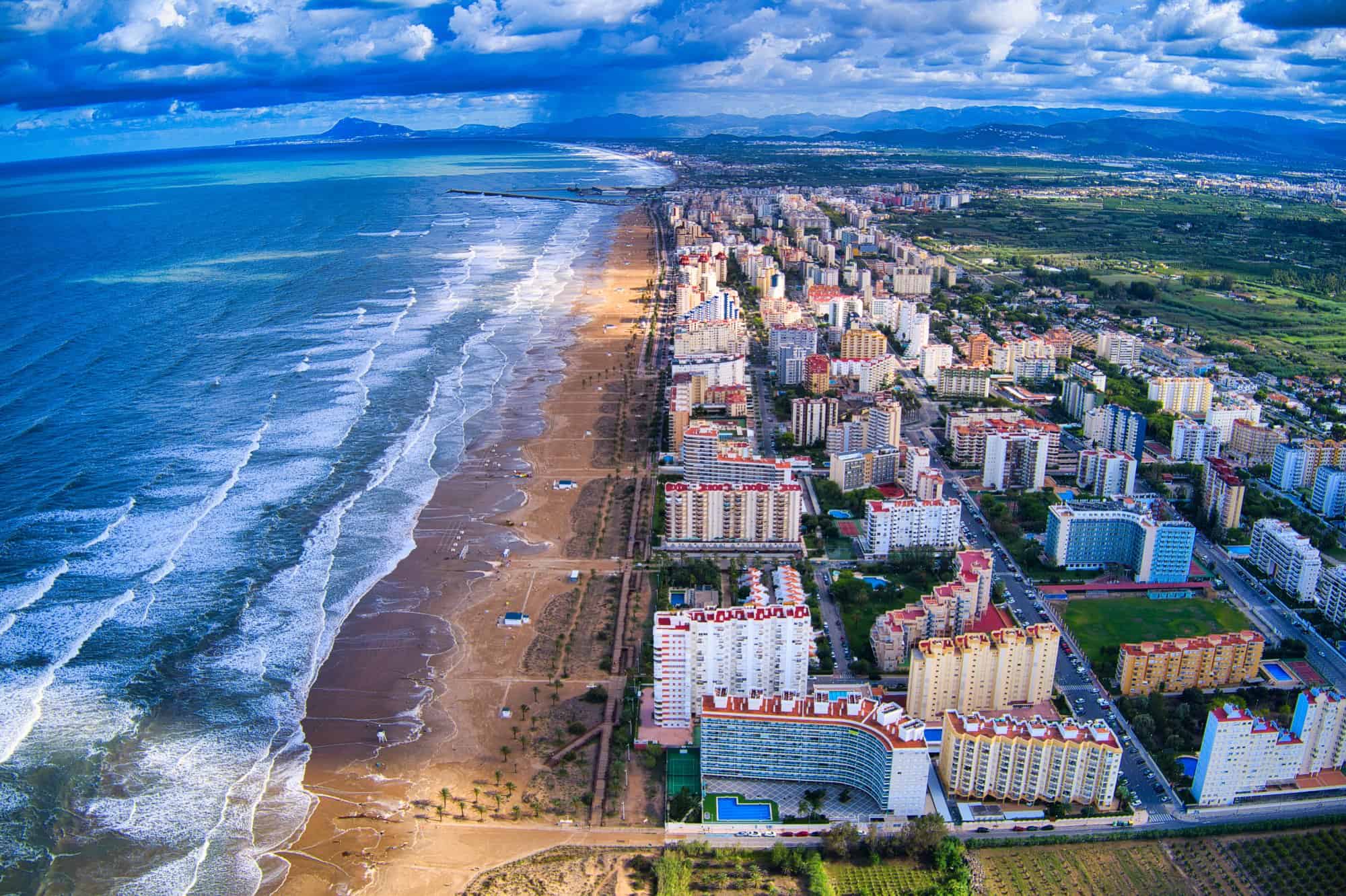
The capital, Valencia, is a one-stop holiday destination for everyone and is rapidly becoming a very popular choice for expats.
Valencia has incredible nightlife and cuisine. It’s the birthplace of the Paella, and Spaniards say Valencia still does it the best.
The guide to Living In Valencia will help you discover everything this wonderful city has to offer expats.
Sagunto is a Roman-era metropolis frozen in time and a popular destination for cycle tourism, offering both fully serviced and remote beaches. Puerto de Sagunto is for those who want to be in the mix of it all, and Playa de Almardá is for those who simply want to relax.
Gandía, the second largest city of the Costa de Valencia, is a city with two faces. Gandía City is the urban yet relaxed heartbeat. Gandía Playa is a dynamic touristy resort area where the beaches, nightclubs, and discos are packed all summer long.
Unlike the international presence of Valencia, Gandía is primarily Spaniards.
The Costa Blanca - the White Coast
The region of Valencia continues and becomes the Costa Blanca.
This is Alicante, and this is where Spain starts looking more like a desert.
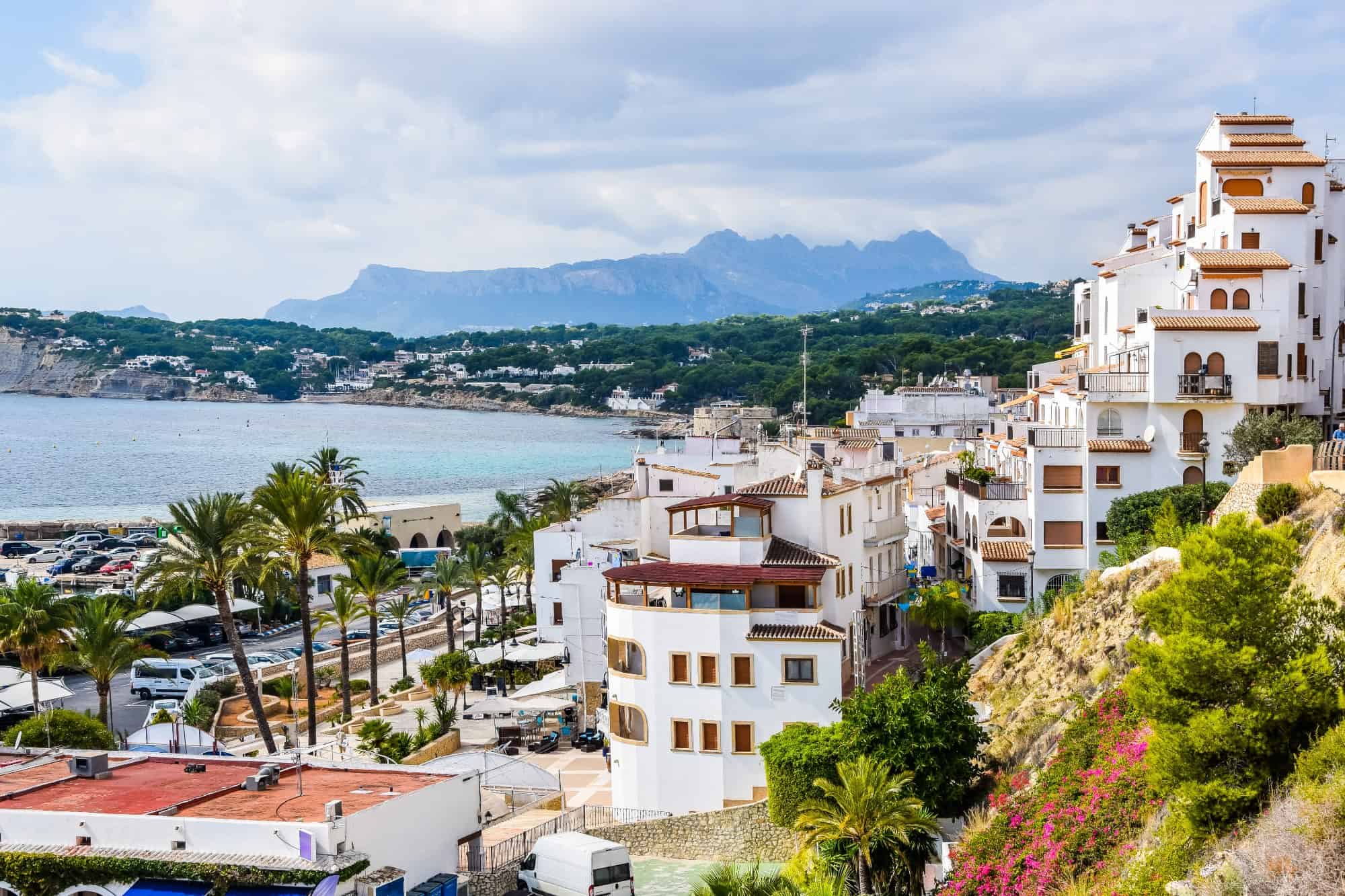
From here on, it's easy to see how Spain got its reputation for being a premier summer destination.
Alicante offers the best of Spain with a cost of living that allows everyone to enjoy it. But there's more to Alicante than just affordability. Our Living In Alicante guide reveals why the place is so popular with expats.
Benidorm is a city dedicated to resort tourism and one of the most popular vacation spots in the Costa Blanca.
As a resort town, Benidorm has a bit of everything. Offering adult-only resorts as well as family-friendly areas, and is a favorite destination for northern European pensioners. You can find out more in our Living In Benidorm guide.
The Mediterranean enclave of Torrevieja is a modern international city that caters to eco-tourism, golfers, and beach lovers as all the beaches fly Blue Flags.
Torrevieja is more than just a holiday destination, however. As one of Spain’s largest expat hubs, Torrevieja is also one of the few areas in Spain where expats can get by knowing only English.
The Costa Cálida – the Warm Coast
Where eastern Spain begins to become southern Spain is the region of Murcia and the Costa Cálida.
Murcia is Spain’s hottest province, as it is essentially a desert with numerous oases of incredible fertility and modern urban centers.
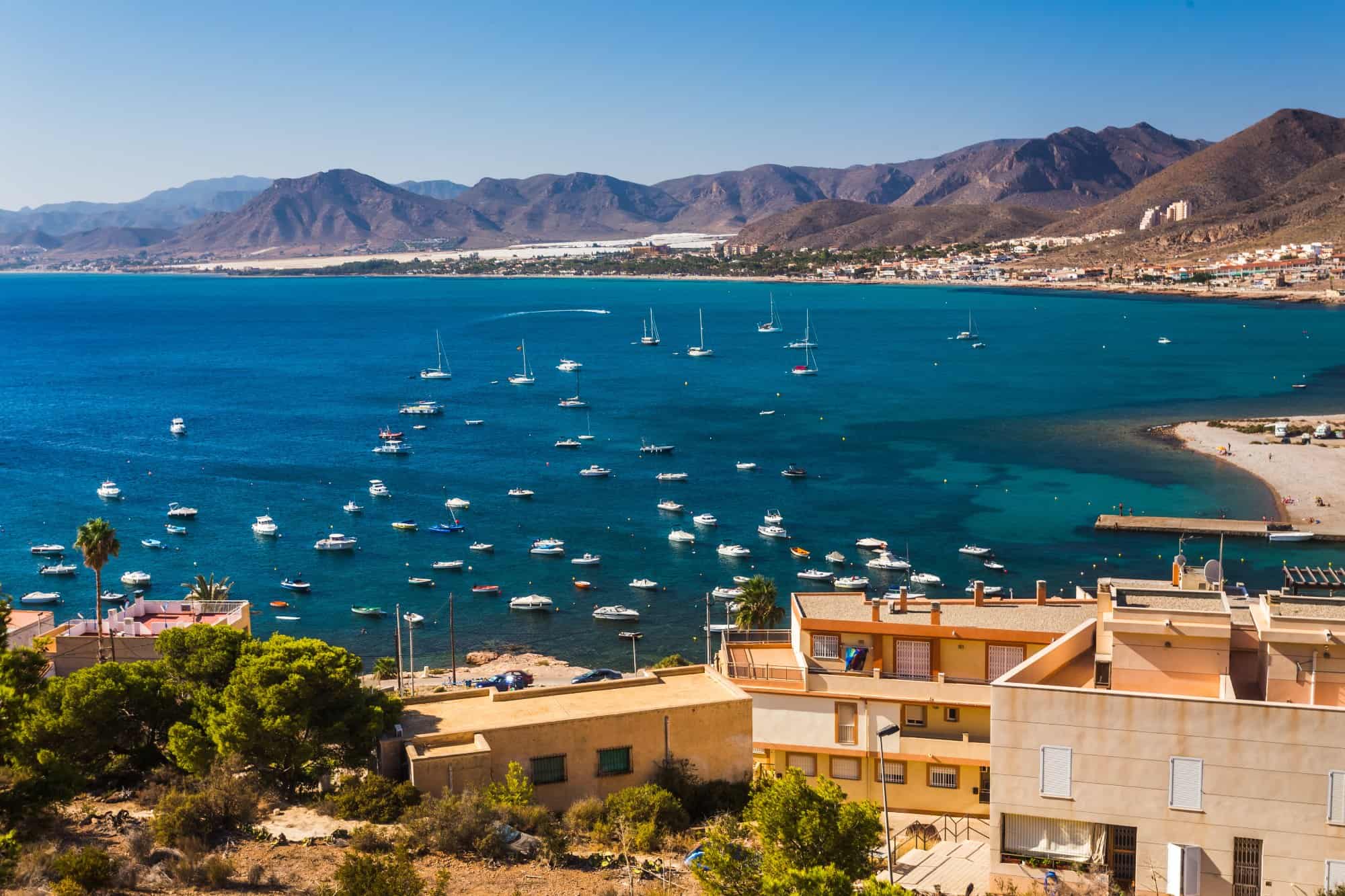
The entire region is very Spanish, with just the right amount of international added to make it a welcoming destination for everyone who wants to embrace traditional Mediterranean Spanish life.
Along the Costa Cálida, the primary expat zones are in Cartagena and San Javier.
Cartagena is the Costa Cálida’s modern port city and is saturated with millennia of history.
San Javier is equally appealing to expats, offering two of the Mediterranean's most unique coastlines along the sandbar of La Manga.
Home to numerous developing expat communities, Bolnuevo is a standout. Favored by British expats, the Bolnuevo area of Mazarrón offers a contemporary lifestyle on a modest budget in an amazing location.
Mazarrón is well connected to Murcia’s large urban centers and is only an hour from Torrevieja.
Murcia city is approximately 40 minutes inland but provides its expat communities easy access to the Costa Cálida. You can read more about this area in our Living In Murcia And The Costa Calida guide.
Andalucía - Spain’s southern coastline
The south of Spain is unique, and Andalucía is one of the most desirable coastal destinations in Europe.
Andalucía's four Costas are a fusion of modern-day Spain with traditional culture and ambiance. As well as the best option for luxury travel and lifestyle.
If year-round sunshine is what matters most to you, Andalucía should be at the top of your list.
The Costa de Almería – the Coast of Almería
The Costa de Almería’s 135 miles / 217 KM of coastline hosts many of Andalucía’s remaining untouched beaches, exceptional natural landscapes, some of Spain’s best nudist communities, and a string of small coastal villages that are seemingly immune to the stress and anxieties of modern life.
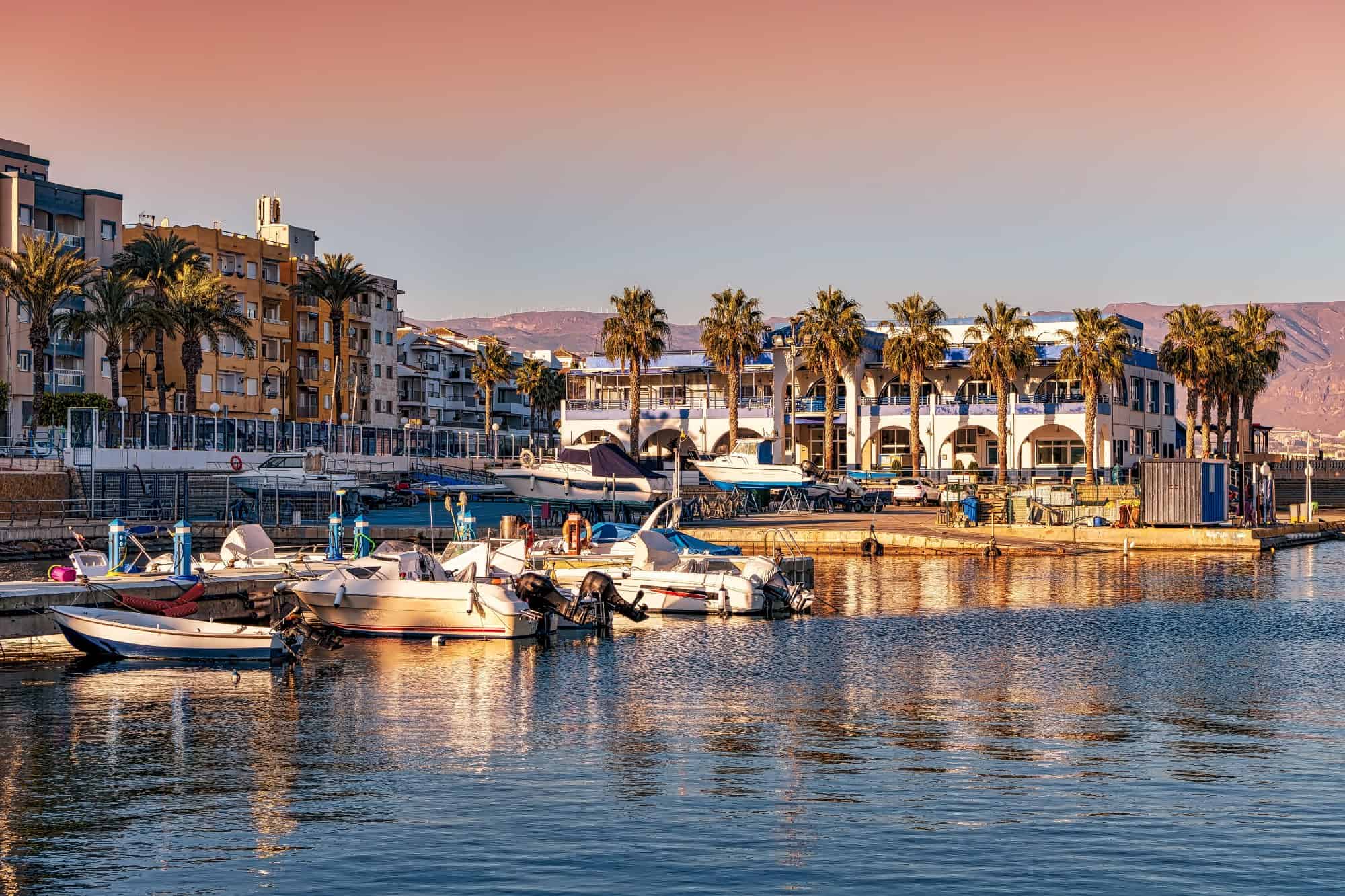
In the opinion of many, the Costa de Almería is the best of Andalucía.
The 50 beaches and 13 villages of the Costa de Almería are collectively one of Spain’s most popular summer destinations.
Almería is one of Spain’s smaller cities but one of Andalucía’s most important urban, economic, and tourist centers.
A hotspot for the beach, nature, and history, it's home to an incredible inventory of diverse landmarks and attractions, such as Andalucía’s largest aquarium, where you can swim with sharks.
Further down the coast, Mojácar was once named one of ‘The Most Charming Towns & Villages in Spain’.
The coastline is full of restaurants offering traditional and international food, bars, cafes, bistros, summer activities, and hotels.
The village is a splash of whitewashed houses cascading down the side of the Sierra de Cabrera.
Love seafood? Then Garrucha is your place. Its marinas are full of leisure boats and hundreds of shrimping vessels harvesting the exquisite Gamba de Garrucha.
These are the only waters in the world where this renowned red prawn lives and the best ones never leave the village.
Much of the Costa de Almería only operates during the summer but is peppered with small expat communities from the UK, the Netherlands, and Germany. You can pretty much find one in every village and city.
The Costa Tropical – the Tropical Coast
The Costa Tropical, sometimes called the Costa Granada, stretches across the province of Granada. It’s the least touristy area in Andalucía.
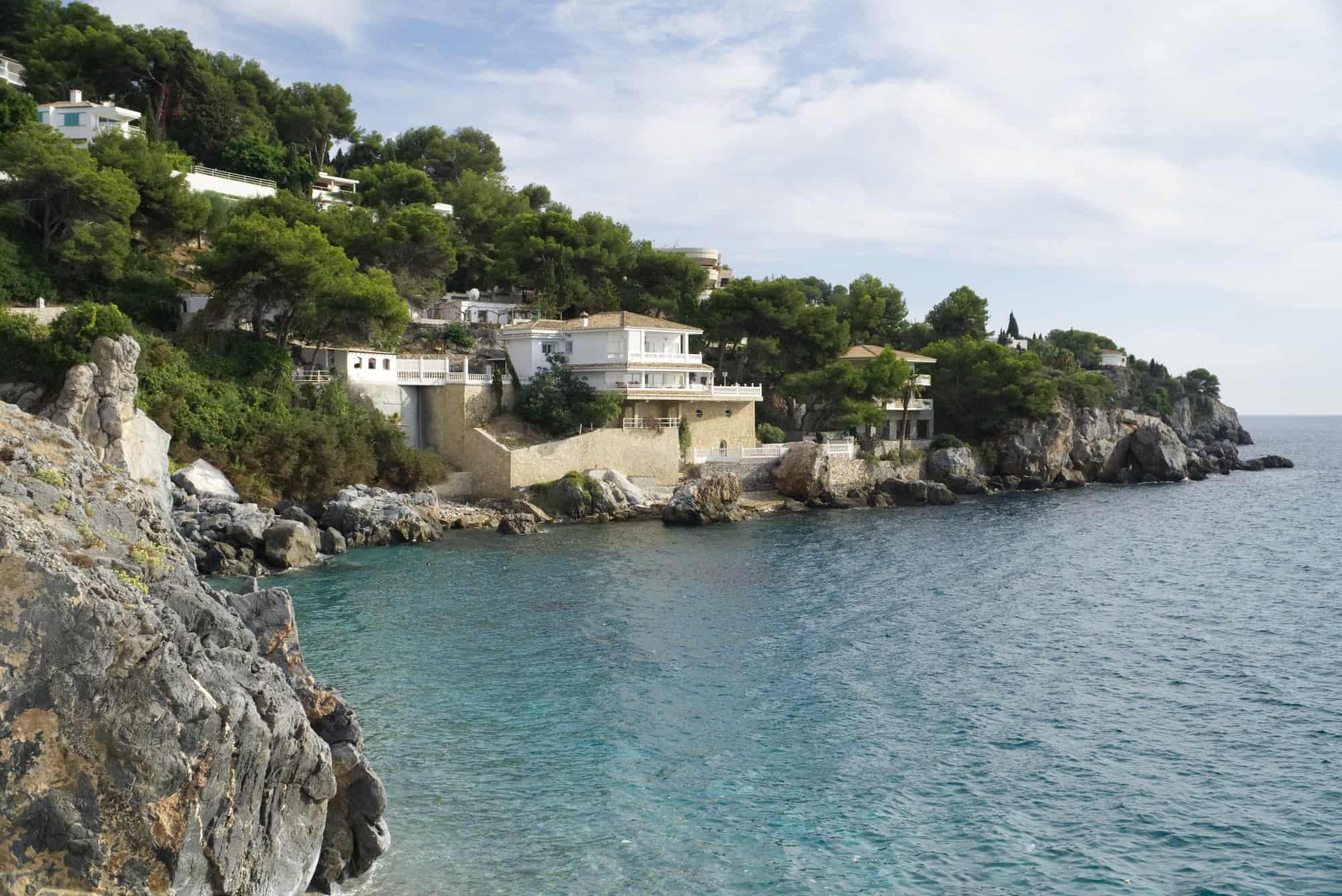
Possessing Spain’s most unique microclimate, the Costa Tropical is well… tropical. In the late spring and early summer, you can ski the Sierra Nevada in the morning and return to the Costa Tropical to bathe on the pristine beaches in the afternoon.
The most popular destinations on the Costa Tropical are Almuñécar, the quaint seaside fishing village of La Herradura, and the Marina del Este.
Almuñécar’s restaurant scene is all about Spanish cuisine. The exception is El Chaleco, a Bib Gourmand Michelin 2022 restaurant specializing in French-inspired cuisine.
The beach, Playa San Cristobal, is what Almuñécar is famous for. The promenade transforms into a summer venue offering live music, dancing, and an amusement park.
La Herradura’s four beaches remain mostly in their natural state, with Playa Berengueles being one of Spain’s top scuba destinations.
Motril is the industrial hub of the Costa Tropical. Its fun side includes a golf course and seven beaches, with the most popular, Playa Granada, in the city’s upscale area.
Nerja, a mix of mountains and beaches, is actually a Costa del Sol village, but it has a Costa Tropical climate.
Though Granada is an hour inland, it’s easy to reach the Costa Tropical from the city.
The Costa del Sol – the Sunshine Coast
Spain’s crown jewel, the Costa del Sol, is the resplendent beachline of Malaga along the Alboran Sea, the western arm of the Mediterranean.
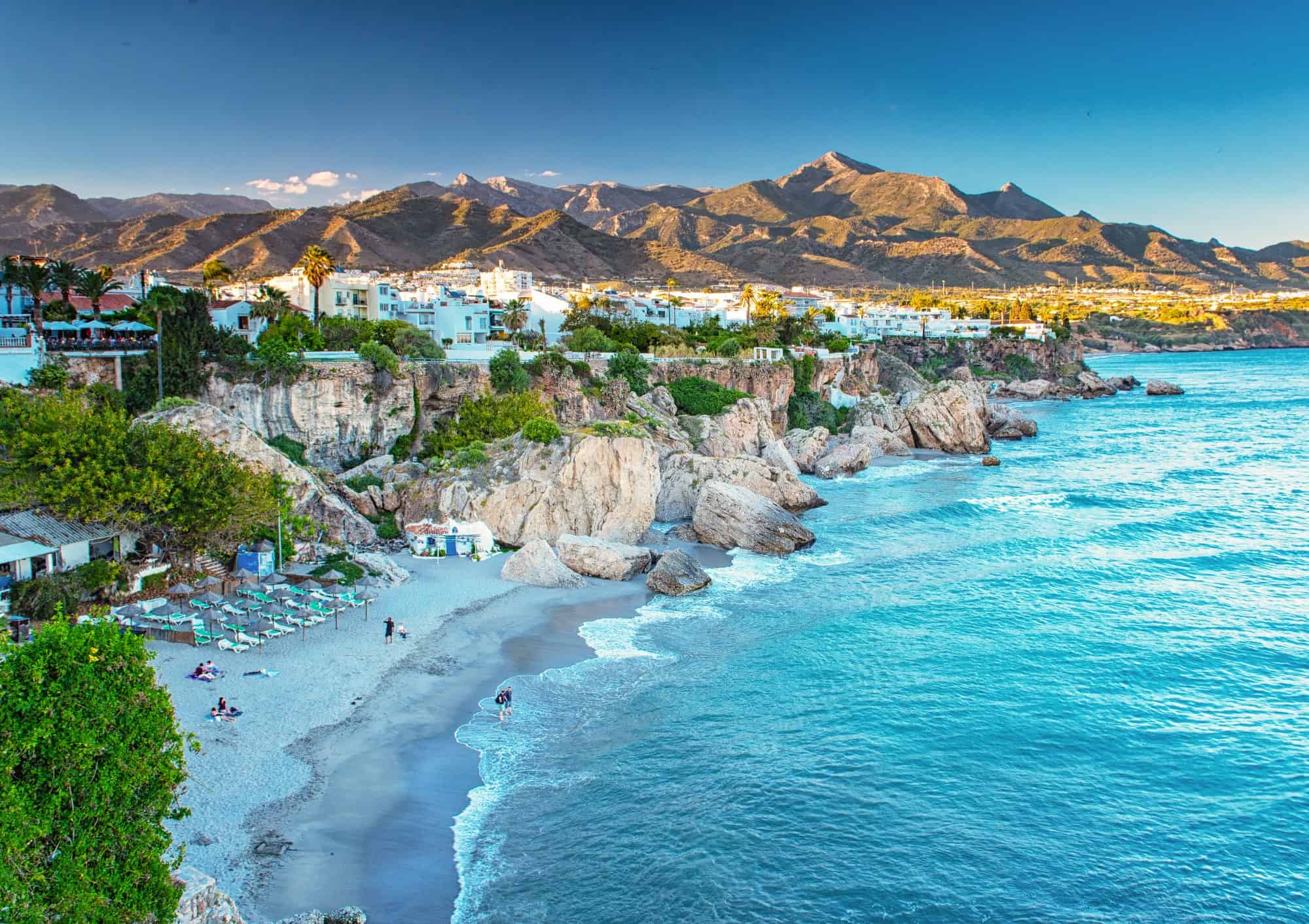
Andalucía’s most developed region, and one of Spain’s most important tourist areas, the Costa del Sol is open to absolutely everyone.
The Costa del Sol offers:
- Europe’s largest concentration of golf courses,
- Over 125 beaches,
- 15 marinas,
- Nine theme parks,
- More jet skis per capita than anywhere in Europe,
- English is widely spoken,
- One of Spain’s most technological regions, and
- A plethora of expat communities.
All of which is strewn throughout the Costa del Sol’s more famous locations of Malaga city, Marbella, and Estepona, but also found in some of its smaller paradises.
On the edge of Malaga city is the hugely popular tourist town of Benalmádena which offers a lot to do at a good price. There is the Tivoli World amusement park, two aquariums, several beach clubs, a cable car, fishing expeditions, an abundance of nature, and of course, the beaches.
San Pedro, situated between Marbella and Estepona, is where the summer ends, as its October fair is Andalucía’s final summer festival.
San Pedro is a traditional Spanish town with a food and drink scene that can rival any city in Spain. San Pedro’s beaches are idyllic, and the promenade is one of San Pedro’s busiest social spots.
Fuengirola hosts one of Costa del Sol’s largest expat communities. Once a small and isolated fishing village, Fuengirola has grown and is very well connected to everything while still maintaining its hidden and quaint charm. The prized beaches of Fuengirola make it one of Costa del Sol’s busiest summer tourist destinations.
The Costa de la Luz - the Coast of Light
Rounding out Spain’s impressive coastal border is the Costa de la Luz. Returning to the Atlantic Ocean, just outside the Strait of Gibraltar, this is where Spain’s navy calls home.
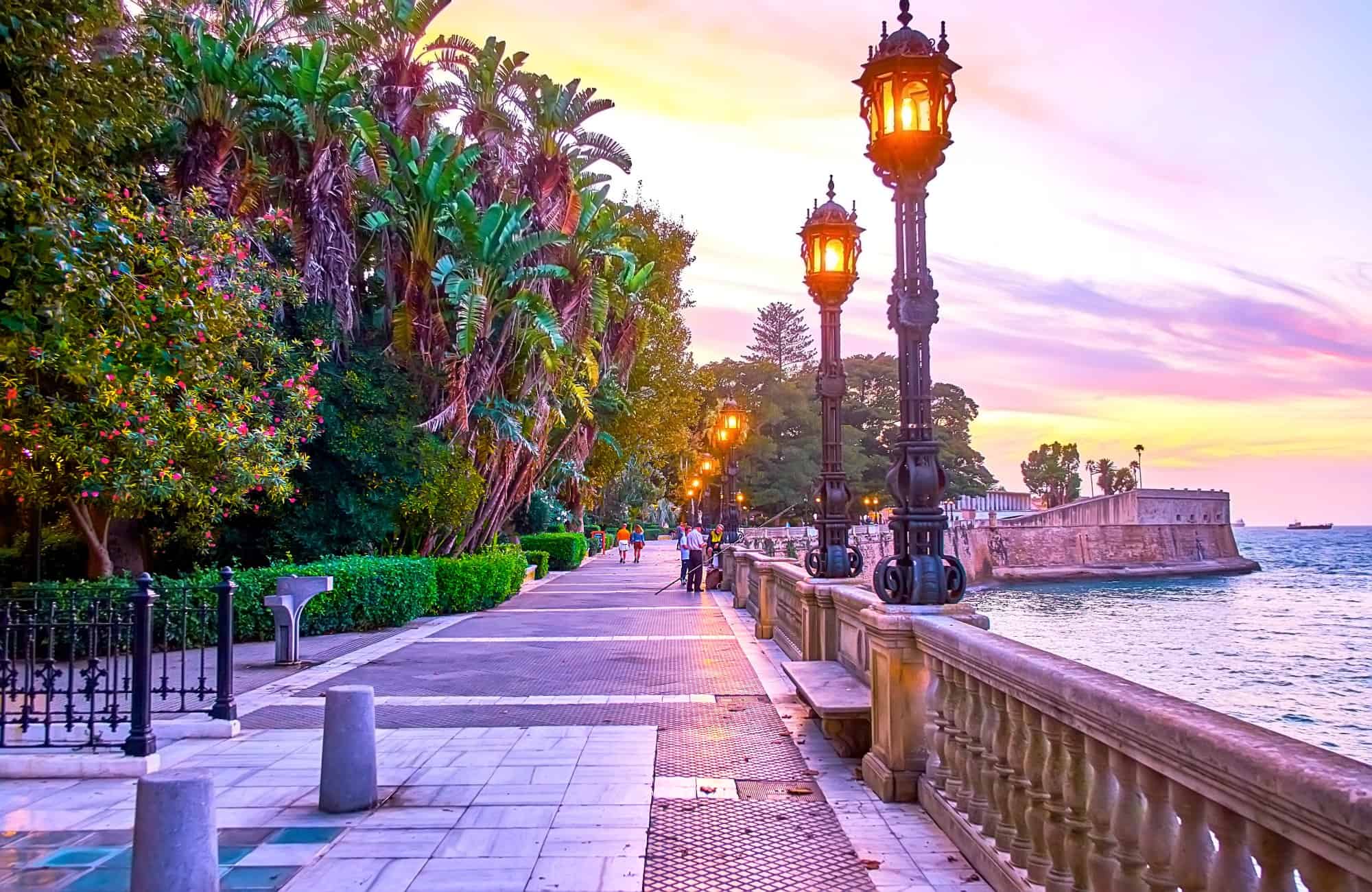
The Costa de la Luz has southern Spain’s mildest temperatures, the most wind, and the least amount of hotel and resort development.
The beaches here have much finer sand and tend to be far longer in length, instead of being subdivided into smaller beaches, as most of Spain’s Costas are.
Thanks to the Atlantic winds, the Costa de la Luz garners international acclaim for windsurfing and kiteboarding.
If water sports are your thing, then you should definitely consider living on the Costa de la Luz.
The coastline is divided into two areas; the Cadiz province and the Huelva province. Both cities are modern and developed urban hubs with rich seafaring histories and traditions.
Tarifa is a small bohemian outpost and Europe’s southernmost point. Tarifa is also the wind sports capital of Europe. It’s a town entirely focused on nature as a sport.
Fishing, whale, and dolphin watching, hiking, surfing, water sports, birdwatching; if you can do it outdoors, odds are you can do it in Tarifa and neighboring Algeciras.
Cádiz is actually an island attached to the mainland by two bridges and a sandbar, where the city continues. Both districts serve numerous ports, a plethora of beaches, and all the amenities of contemporary living.
On the mainland, San Fernando is one of the more popular urban districts.
Rota, home to the naval base, has more of an international feel as it is also a popular vacation spot for Europeans.
As a favorite holiday destination for nearly all of Seville, Huelva has the busiest summers on the Costa de la Luz.
Huelva is historically a British and German expat destination, and the city still has a thriving international community.
Seville sits an hour inland from Huelva and the Costa de la Luz but is easily accessible for day trips.
The Spanish Costas - summary
If you are considering moving to Spain, the chances are you are looking at coastal locations.
Spain’s Costas not only represent the best of Spain but the country’s incredible diversity of life and culture. They also represent the best way to find the perfect expat community and lifestyle.
The good news is there are no bad choices. You can’t go wrong with whatever Costa you choose.
But choosing the perfect Costa for your lifestyle is the best way to begin and end your quest for your new Spanish home.
You might find useful:
- Living In Spain – practical tips and information on Spanish visas, residency, healthcare, taxes, the pros and cons and more
- Best Places To Live In Spain – the best and most popular expat locations in Spain.
- Planning & Organising Removals To Spain - How to save time and money on organizing removals to Spain: your removals options, how long they take and how much they cost, shipping pets, etc.
- Didn’t find what you were looking for or need further advice? Comment below with your question and we will do our best to help.
Secure Peace of Mind with Best-Value International Health Coverage
International Citizens Insurance provide free, no-obligation quotes from the leading international health insurance providers with plans tailored to meet your needs. Trusted by thousands of expats worldwide.




